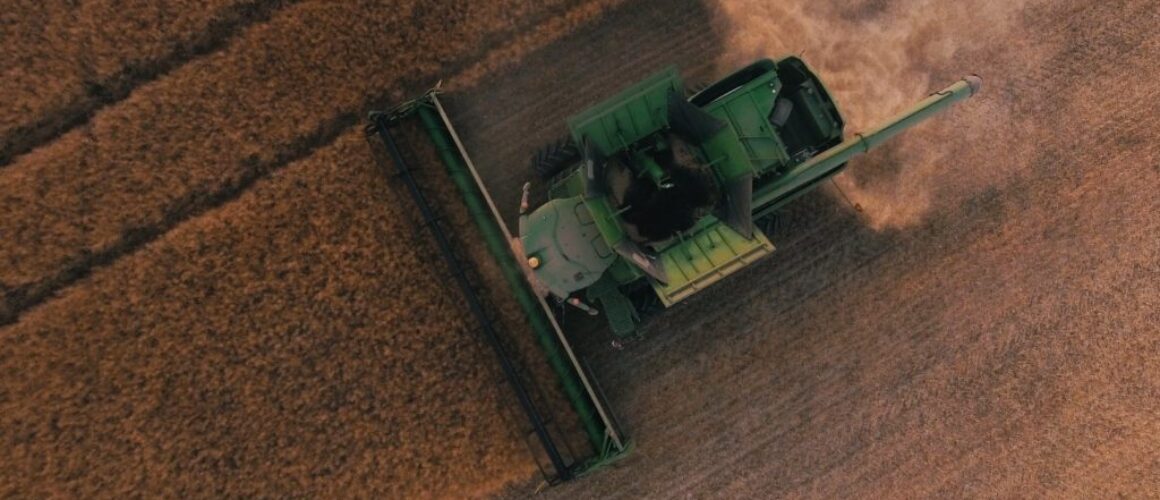Food, Farming, and the Fate of Planet Earth
Agriculture has disrupted the planet more than anything we have ever done, including burning fossil fuels. A sustainable future depends on recognizing this fact — and radically changing the way we farm and eat.
More than any other invention in human history, agriculture has radically transformed our civilization and our relationship with the natural world.
How did we get to this point?
Early humans didn’t farm to get food; we were hunter-gatherers who lived off whatever we could find around us. But from meager beginnings about 12,000 years ago, early forms of agriculture began to appear worldwide — most notably in Mesopotamia, India, and China. Over the coming centuries and millennia, farming slowly spread across the world, transforming landscapes, economies, and cultures along the way.
For most of history, our food production increased mainly by expanding the amount of land in production. By the twentieth century, large areas of farmland had been established around the world, forming the “breadbaskets” we know today.

But starting in the 1960s, we witnessed a dramatic change in the way we farm in the form of the so-called Green Revolution, which mobilized industrial farming methods that yielded more crops on each parcel of land, fueled by improved crop varieties and dramatically increased use of fertilizers, irrigation, and machines. As a result, the world’s agriculture shifted from a long period of geographic expansion to a period of rapid industrial intensification. Farming would never be the same.


In many ways, the story of agriculture and food has been a story of success — at least at first glance. Agriculture allowed us to shift from hunter-gatherer societies, to early settlements, to cities, ultimately to our modern global society. We live longer, healthier lives, and most of the world’s population has been freed from gathering food to follow other pursuits. The success of our species is due, in part, to the success of agriculture and the food system.
But this success has come with a cost. A big one.
Our food system is now so large, and so unsustainable, that it is endangering the very environmental systems that support and sustain it.
. . .
While we typically think of tailpipes, smokestacks, and giant factories as being the biggest driver of environmental damage worldwide, it turns out that agriculture is the biggest. Don’t believe me? First, consider the size of agriculture’s geographic footprint.

Today, roughly 16 million square kilometers of the Earth’s land, or an area approximately the size of South America, is used just to grow the world’s crops. And another 34 million square kilometers, an area about the size of Africa, is used for pastures and grazing lands.
Together, these agricultural lands cover roughly thirty-seven percent of Earth’s ice-free land surface; the world’s urban lands, by comparison, cover roughly one percent. No other human activity can match the geographic footprint of agriculture.
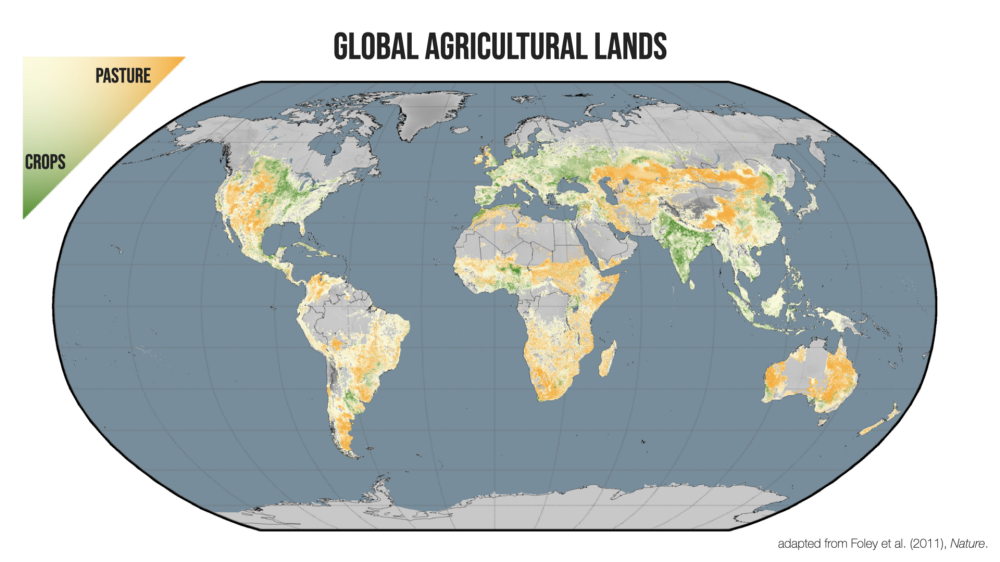
Most people are surprised to learn that most of this land is used to raise and feed animals. Roughly 75% of the world’s agricultural land is used for grazing animals or producing animal feed. As a result, animal production and our desire for meat and dairy products is a major driver of food’s footprint around the world.
. . .
As the world’s agricultural lands have expanded, they have cleared and converted vast areas of natural grassland, savanna, and forest in their wake. This conversion of natural landscapes to agriculture has caused massive habitat losses worldwide and the extinction of countless species.
Today, some entire ecosystems, such as the prairies of North America or the Atlantic rainforests of Brazil, are nearly gone, almost entirely replaced by farmland, and others are being cleared at alarming rates. Agriculture has consumed more land and habitat and driven more species to extinction than any activity in human history. Nothing else comes close.
. . .
Agriculture also has a tremendous impact on our planet’s water resources. Agriculture is responsible for roughly 70% of all of the world’s water withdrawals (or approximately 2,800 cubic kilometers of water per year), where freshwater is taken from groundwater, rivers, and lakes worldwide. In terms of consumptive water use, where water is withdrawn and not returned to the same watershed later, this figure climbs closer to ~85%.

The use of water for agriculture has caused the collapse of rivers, lakes, and even inland seas across the world. The Colorado River, for example, rarely flows into the ocean today. The Aral Sea in the former USSR has virtually disappeared since its main sources of water were diverted to grow cotton in central Asia’s deserts.
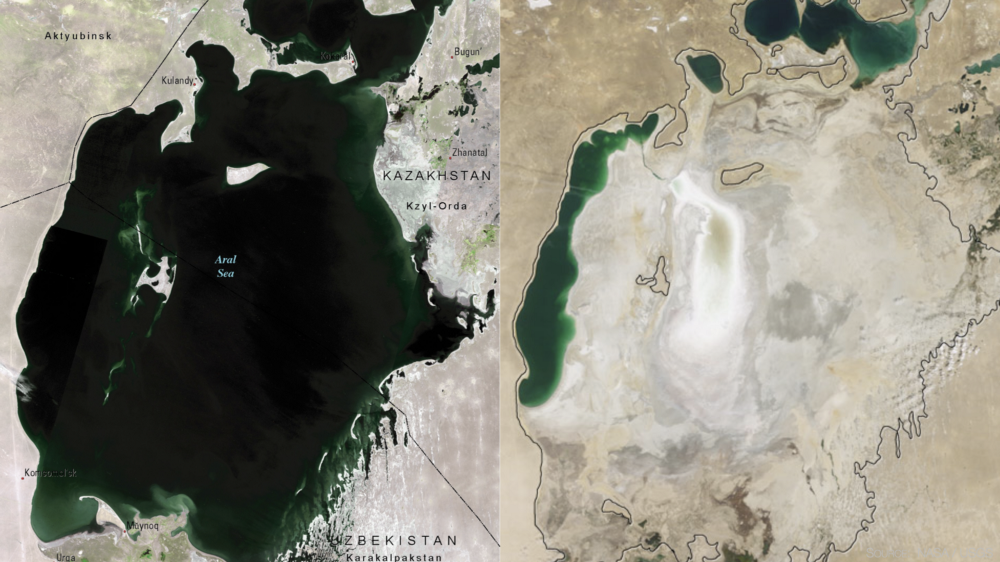
Industrialized farming has also been a major source of pollution around the world. Perhaps the most obvious impact comes from the use of chemical fertilizers. Today, the use of fertilizers is so high that it has more than doubled the normal geological flows of nitrogen and phosphorus across the Earth’s surface.
But the biggest impact is felt not in the soil, but in the waters of our planet. Excess nitrogen and phosphorus have polluted waterways worldwide, chocking them with excessing plant and algae growth, and can severely degrade lakes, whole watersheds, and even our coastal oceans. For example, the “Dead Zone” of the Gulf of Mexico is caused by fertilizer runoff from Midwestern farms carried by the Mississippi River to the sea. Other “dead zones” appear in nearly every coastal area downstream of industrialized agriculture.
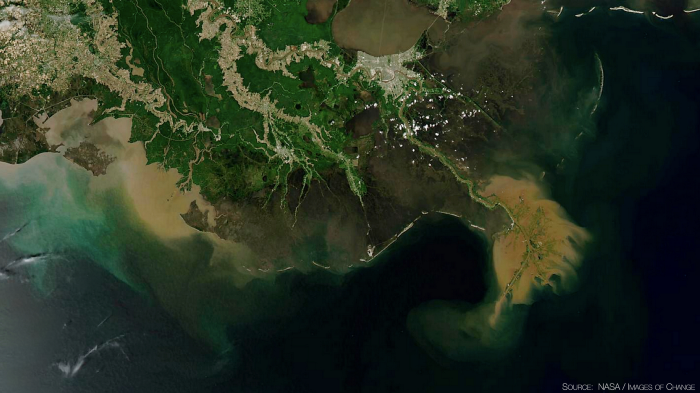
In addition, the world’s agricultural practices are a massive contributor to climate change on the planet.
Deforestation, mainly used to convert forests into croplands and pastures, is a major source of carbon dioxide (CO2) to the atmosphere. Other agricultural practices, particularly raising cattle and growing rice, are a major source of methane (CH4) to the atmosphere, a powerful greenhouse gas. And the overuse of fertilizers and manure can release nitrous oxide (N2O) from the world’s agricultural soils, another powerful greenhouse gas, into the atmosphere.
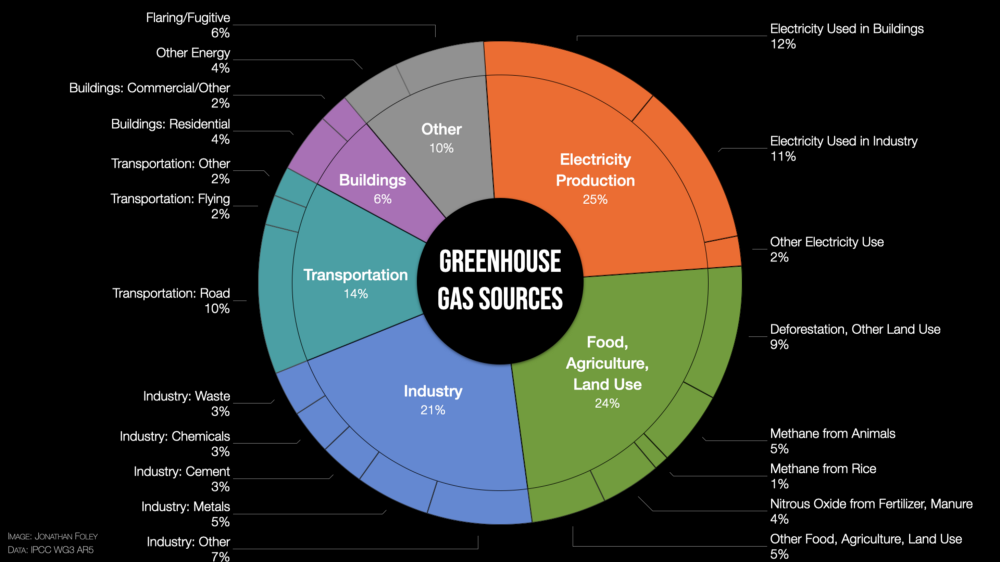
Taken together, farming practices and land use directly release about 24% of the world’s total greenhouse gas emissions, making it the second-biggest source of greenhouse gasses to the atmosphere. (For comparison, producing all of the world’s electricity releases ~25%.) So, if you want to address climate change, rethinking agriculture should be somewhere near the top of the list.
Those are the direct emissions from food, agriculture, and land use. But it turns that the entire food system — including the transportation, packaging, refrigeration, and cooking of food — releases even more. A recent study published in Nature shows that the larger food system emits roughly one-third of global emissions when including these indirect emissions as well.
The numbers speak for themselves. The world’s agriculture and food system:
- uses ~35–40% of all of the world’s land (and ~75% of that is used to raise animals or the feed they eat)
- is the largest driver of habitat loss and species decline in human history
- is responsible for ~70% of the world’s total water withdrawals and ~85% of our global water consumption
- is the largest source of water pollution, especially in the form of nitrogen and phosphorus runoff to aquatic ecosystems and coastal oceans
- is one of the largest sources of greenhouse gases — causing ~24% of our emissions directly, or ~35% of when including indirect emissions from the larger food system
And, yet, we all need to eat. We can’t simply decide to stop agriculture for the sake of the environment.
Producing food is perhaps the single most important — and absolutely necessary — activity humans engage in. Without it, we would literally cease to exist as a modern civilization. And the need for food is increasing, as populations continue to grow and more people shift towards meat-rich diets.
The crucial thing for our future is to find ways to feed a growing world without ultimately destroying the planet we all depend on.
